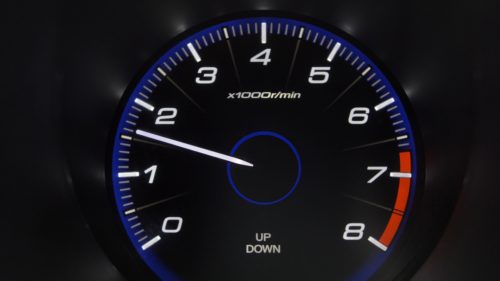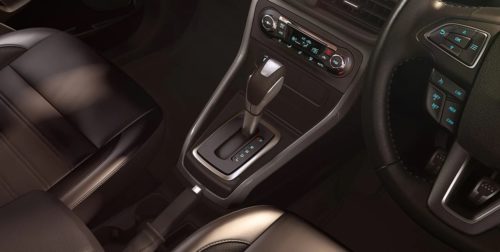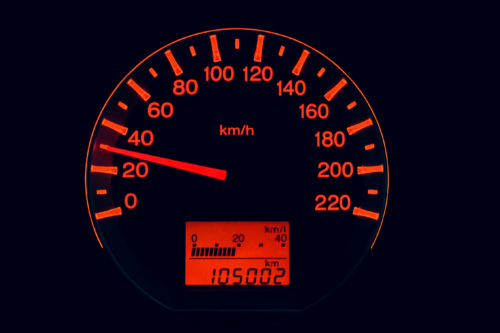What Is An Engine RPM And How Does It Affect Fuel Consumption?
The RPM meter or tachometer is now a standard fixture in most cars, and many of us have learned to drive with one eye on the road and the other on the RPM needle. It represents one of the most important metrics of engine performance – how fast the crankshaft spins. But how exactly does RPM impact the performance and fuel efficiency of your car? We’ve put together this primer to answer just that.
What Is RPM?

RPM stands for Revolutions Per Minute. In a car, RPM measures the number of times the crankshaft spins in one minute. The spinning motion of the crankshaft, derived from the up-and-down motion of the engine’s pistons, translates to the spinning of the wheels which is what moves the car. The higher the RPM, the more the power output of the engine, but only up to a point. This point of peak power generation is what is usually stated in the car’s performance specs. For instance, the Ford EcoSport 1.5L petrol (Manual) generates 122HP at 6500 RPM. Beyond that, the amount of power generated will fall despite the rise in RPM.
Turning the crankshaft is accomplished by combusting a combination of air and fuel. The more revolutions the crankshaft completes, the more air and fuel it burns and the faster the car runs. But the engine is a mechanical device, and like all mechanical devices, it has its limitations. If an engine spins too fast, it could damage itself. This point, called the Redline, is marked literally in red on the tachometer (the dial that shows the RPM). It’s inadvisable to push the car beyond the redline.
RPM And Shifting Gears

The RPM is perhaps most popularly used as a tool to gauge the appropriate time to shift gears. As a general rule, change gears at lower RPMs for maximum fuel efficiency and mid to higher RPMs for better acceleration. The RPM plays the crucial role of preventing damage to the engine or the gearbox by serving as a gearshift indicator. Novice drivers, in particular, might find it difficult to decide when gear changes are required. The tachometer helps them make this decision and prevents unnecessary harm to drivetrain components.
RPM And Fuel Efficiency

As mentioned earlier, the higher the RPM, the more fuel the engine is going to consume. However, when keeping environmental and cost considerations in mind, fuel efficiency is now of paramount importance. Keeping track of the car’s RPM while you drive is suddenly more important than ever before. As a thumb rule, the lower you keep your engine’s RPM, the less fuel it is going to consume. Going too low might stall the engine but keeping the RPMs just above idling will not only keep the engine puttering on, but it will also do so in a most economical manner.
In cars with automatic transmission, the matter of changing gears is taken out of the driver’s purview. Here, the urgency with which the driver depresses the accelerator dictates when gears change. Under gentle acceleration, the gearbox control unit will change gears at lower RPMs, prioritising smooth drive and better fuel efficiency. Under hard acceleration, it will hold gears until higher in the rev range and shift them more aggressively in order to maximise performance.
Fuel efficiency is an important consideration for Ford vehicles, which is why Ford engines offer great performance while consuming as little fuel as possible. The Ford Aspire returns fuel economies of up to 18.5 km/l for petrol and 23.5 km/l for diesel, whereas the Ford EcoSport delivers 15.9 km/l and 20.9 km/l for petrol and diesel, respectively. Ford’s diesel engines are adept in delivering high performance while minimising fuel consumption. This also stands true for the recently introduced ‘EcoBlue’ BSVI Compliant diesel engine on the Ford Endeavour. They achieve this primarily by reducing friction among the various moving parts of the engine and using transmissions with wide ranges and tall ratios to keep the RPM low even while cruising at high speeds.
Constantly revving a motor to its redline might sound exciting, but be warned – it comes at the cost of increased fuel consumption and eventual damage to the engine. Get behind the wheel of a Ford; the excitement will come without having to push the needle too far!
Subscribe to our newsletter
Subscribe to our newsletter to stay upto date with latest news, offers and much more



